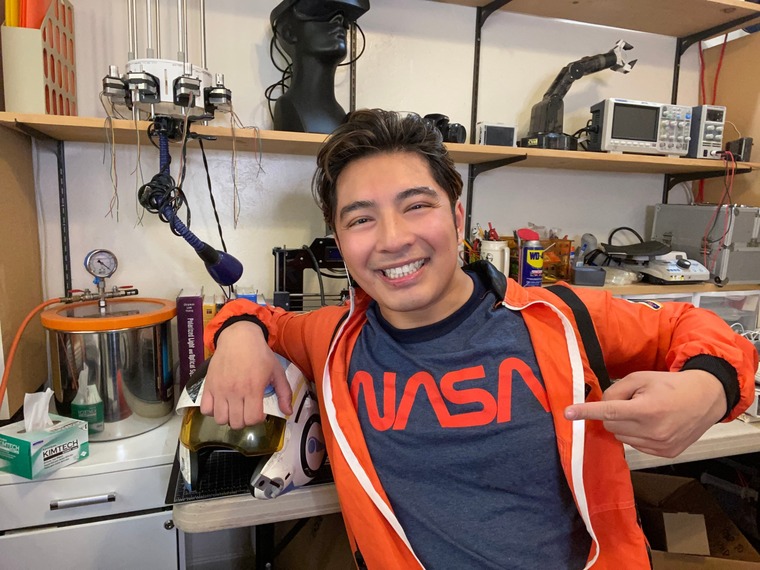Kevin Chew Figueroa

Kevin Chew Figueroa is a 3rd year PhD student specializing in Computational Imaging at the University of Arizona - Wyant College of Optical Sciences. He received his MS degree from the University of Southern California (USC) in Computer Science - Data Science (specializing in machine Learning, computer graphics, discrete differential geometry) and obtained his BS in Electrical & Computer Engineering (specializing in digital control systems, FPGA design, DSP) from California State Polytechnic University, Pomona (CPP). He possesses a wide breadth of lab experience across a myriad of fields. This includes wet lab/biochemistry research at California Institute of Technology (Caltech), as well as synthesizing chemotherapy drug-loaded nanoparticles at California State University Los Angeles (CSULA); Dry lab/hardware work in semiconductor design, circuit analysis, signal processing, microcontroller and microprocessor design, digital control systems; and development of a 16-bit RISC single cycle processor implemented on a FPGA at CPP. He is also the recipient of the Joseph W. Goodman Graduate Student Endowed Scholarship in Optical Sciences and was one of two finalists in the international Meta (Facebook) Photonics & Optics 2022 Ph.D. Research Fellowship Competition.
Kevin's 2023 NASA research proposal, “Seeing beyond the Diffraction Limit” lies at the intersection of optical physics, computational imaging, computer vision and deep learning. He is currently under the mentorship of Prof. David Brady, with his current research goal: to contribute to emerging Artificial Intelligence (AI) technologies for array cameras utilizing Fourier Ptychography. Using long-range imaging beyond the diffraction limit and telescope arrays meant for 3D tracking and cataloging, he will pursue untracked small space debris posing threats to manned space flights and civil and military space operations.
Kevin’s research will allow for rapid development, immediate testing, generalizability over a multitude of physical phenomena, and swapping of various optical components. His work will hinge on the use of imaging modalities coupled with the latest deep neural architectures that are focused on procedurally generated 3D multiphysics-accurate space debris data. This data includes phase, polarization, coherent-effects, time-domain effects, or even optical-misalignment faced by multi-aperture systems. In addition to the research, Kevin has planned to pursue outreach opportunities with K-12 students. Kevin will be creating videos (sample here on YouTube) and a comic book focused on this research aimed at middle school, high school and community college students.

